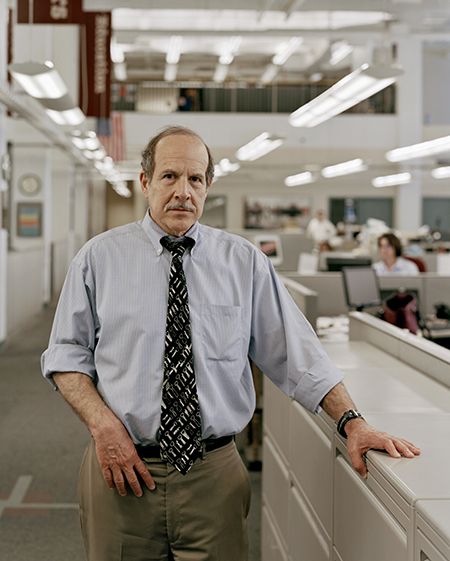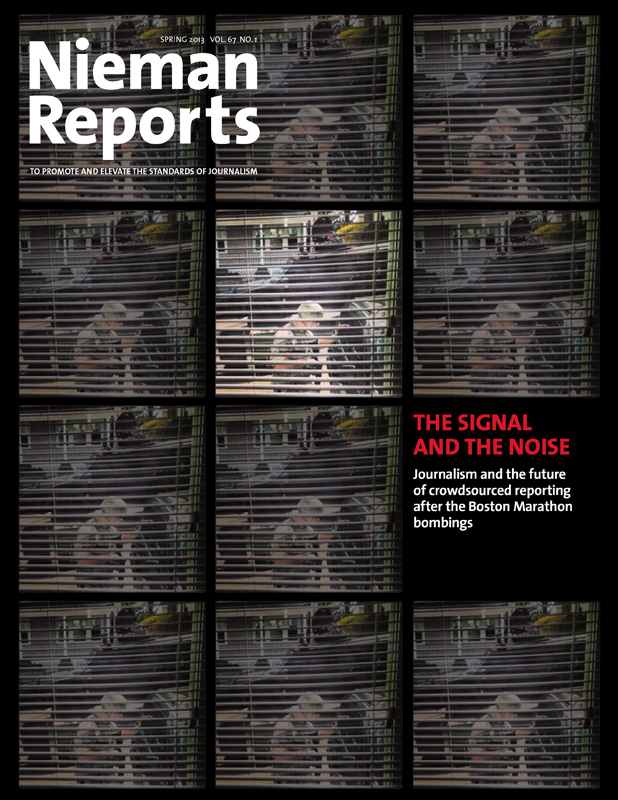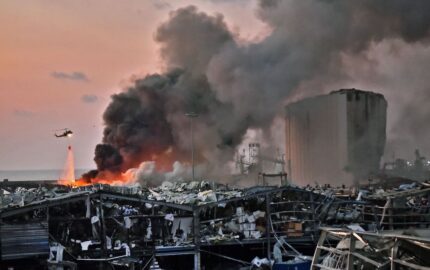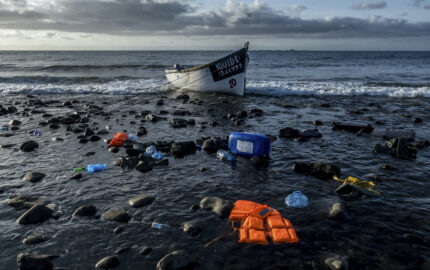
Photo by Will Steacy/From the Project “Deadline”
At precisely 5:27 p.m. on the afternoon of May 13, 1985, a blue and white Pennsylvania State Police helicopter hovered over a heavily fortified row house on Osage Avenue in West Philadelphia. Leaning out of the helicopter, Police Lt. Frank Powell dropped a satchel onto the roof, which moments later exploded with a deafening roar and ignited a fire that burned to the ground an entire city block—61 middle-class, red brick homes. Even worse, 11 of the occupants of the home at 6221 Osage Ave., including children, died in the firestorm.
Read The Philadelphia Inquirer's 25th anniversary coverage of the MOVE bombing.The MOVE debacle, which destroyed a neighborhood and severely damaged the careers of Philadelphia Mayor Wilson Goode, his police commissioner, fire commissioner, and managing director, galvanized the newsroom of The Philadelphia Inquirer, where I was a city desk reporter. (MOVE was a self-proclaimed radical group that had been harassing its neighbors in what had been a quiet, stable middle-class neighborhood.) Within hours, Gene Roberts, the executive editor, had set in motion a series of major investigative projects, all being pursued while more than 30 reporters simultaneously produced a stream of daily news stories, features, profiles and analyses.
Among the key issues, we had to dig into were these: How was the decision made to drop a bomb on a densely populated neighborhood? What was in the bomb? Why didn’t the fire commissioner order nearby fire trucks to extinguish the blaze? Why did police bring an arsenal of weapons to the scene that included a .50 caliber machine gun, seven Uzi machine gun pistols, and .22 caliber rifles equipped with silencers and scopes? If, as eyewitnesses recounted, at least five occupants tried to escape from the back of the MOVE house, how did their bodies end up back in the house once the fire was put out?
By fall of 1985, a special commission opened public hearings on the MOVE conflagration, adding detail to what the Inquirer and other Philadelphia news organizations had been reporting for four months. But even after those hearings and criminal investigations by the district attorney’s office and the U. S. Department of Justice, there were no arrests, no indictments. The aftershocks of the MOVE bombing exacted a heavy emotional toll on the city and cost taxpayers millions of dollars to rebuild the block and settle a myriad of civil suits arising from the confrontation.
In today’s newsrooms, even though staffs have been diluted by the lethal combination of a withering recession and the near disappearance of highly profitable classified advertising, the commitment to watchdog journalism—journalism that provides readers with answers to questions like those raised by the MOVE bombing—has to be the top priority. The First Amendment guarantees freedom of the press so that citizens in a democratic society can learn about the performance of their government and then make informed choices when they vote.
This is what I learned from the great Anthony Lewis, The New York Times columnist, whose course in the press and the constitution I took as a Nieman Fellow in 1982-83. It is a lesson that was reinforced in reading the obituary of another Nieman Fellow, Murrey Marder, The Washington Post reporter whose piercing investigation in November 1953 of U.S. Senator Joseph R. McCarthy’s flimsy and false allegations about a spy ring operating at the Army Signal Corps laboratories in New Jersey led to his censure by the Senate. It’s a tribute to Lewis, Marder and other courageous, determined journalists that their work compelled public officials to finally hold hearings on McCarthy’s accusations and reveal the truth about how the senator had perniciously destroyed the careers of innocent government employees.
Adhering to those same traditions, the Inquirer under Gene Roberts, spent years trying to answer the critical questions behind the MOVE bombing, one of the greatest urban tragedies and travesties in the 20th century. We at The Inquirer did it because, ultimately, it is the great news organizations that often provide the spark to motivate public officials to do the right thing—whether the story is Senator McCarthy’s assault on alleged Communists or the government dropping a bomb on a middle-class block in the heart of a major city.
William Marimow, a 1983 Nieman Fellow, is editor of The Philadelphia Inquirer and a former investigative reporter.
MORE ON WATCHDOG REPORTING
From Shoe Leather to Big Data: ProPublica and the Future of Watchdog Journalism
By Robin Fields
Ask The Right Questions: MuckRock Makes FOIA Requests Easy
By Michael Morisy
Truth or Consequences: Where is Watchdog Journalism Today?
By Dan Froomkin
No Profession for Lone Wolves: Watchdog Reporters Need to Work Together
By Stuart Watson
Cross-Border Collaboration in Watchdog Journalism
By Stefan Candea
Let the Readers Know: How Journalists and the Public Can Work Together
By Ken Armstrong
In Korea, Watchdog Journalism Worth Watching on Television
By Chong-ae Lee
Our Communities Crave Watchdog Journalism
By Raquel Rutledge



